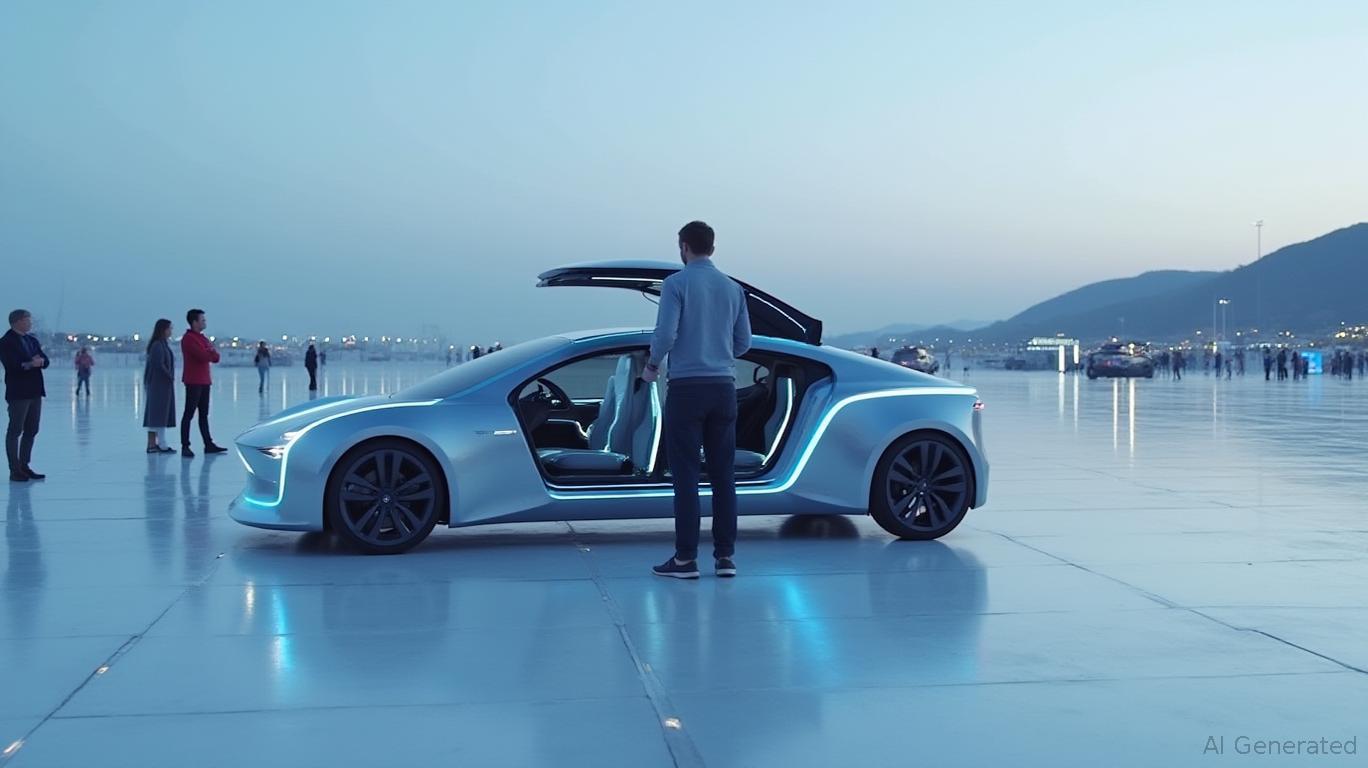Tesla's Robotaxi Launch: A Strategic Catalyst for Autonomous Dominance
The June 22 rollout of Tesla's Robotaxi fleet marks a pivotal moment in the company's journey toward capturing a $2 trillion autonomous mobility market. While skeptics focus on the service's initial limitations—such as its confined launch in Austin, Texas, and reliance on modified Model Y vehicles—this misses the broader strategic significance. Tesla's move is underpinned by three transformative advantages: regulatory tailwinds from a U.S. administration eager to accelerate autonomous vehicle (AV) innovation, scalability fueled by its software-driven ecosystem, and an undervalued autonomous technology stack that positions it to dominate AI-driven revenue streams. For investors, the near-term noise obscures a compelling long-term opportunity.
Regulatory Tailwinds: A Deregulated Path to Dominance
The Trump administration's June 2025 reforms to National Highway Traffic Safety Administration (NHTSA) regulations have created a uniquely favorable environment for Tesla's Robotaxi. Key changes include:
- Streamlined crash reporting: Minor incidents (under $1,000 in damage) no longer require public disclosure, reducing operational friction.
- Expanded exemptions: Tesla's Cybercab—a purpose-built autonomous vehicle lacking steering wheels and pedals—can now secure federal exemptions from outdated safety standards under the revised Automated Vehicle Exemption Program (AVEP).
- Accelerated approval timelines: NHTSA's Part 555 process, which once took years, now aims to finalize exemptions within months, enabling

These policies reflect a broader geopolitical strategy: the U.S. seeks to outpace China's AV ambitions while shielding domestic innovators. For Tesla, this means reduced compliance costs and faster time-to-market compared to competitors constrained by stricter oversight.
Scalability: Data, Software, and the Power of the Tesla Ecosystem
Tesla's Robotaxi rollout leverages its unrivaled data advantage, built from over 1.5 million vehicles equipped with Full Self-Driving (FSD) software. This fleet generates petabytes of real-world driving data daily, far exceeding rivals like Waymo or Cruise. The “software-as-a-service” model is key:
- FSD Unsupervised: Tesla's latest software iteration, already testing in Austin, eliminates the need for safety drivers. This reduces operational costs and accelerates deployment.
- Teleoperation Support: A remote operator network ensures safety during edge cases, a scalable solution as AI improves.
- Vertical Integration: From battery production to supercomputing (Dojo), Tesla controls every layer of its autonomous stack, minimizing reliance on third-party suppliers.
The scalability extends beyond hardware. Tesla's over-the-air updates allow continuous improvements, turning its fleet into a self-improving AI system. Contrast this with legacy automakers, which often lack the software expertise or data infrastructure to compete.
Undervalued Autonomous Tech: A $2T Market Ignored by the Market
Despite Tesla's progress, its stock trades at a 12x forward EV/EBITDA multiple, below peers like Ford (14x) and Alphabet (23x). This undervaluation stems from investor skepticism about near-term execution risks—labor disputes, supply chain hiccups, or regulatory pushback. Yet the market is pricing out the AI-driven revenue streams Tesla's Robotaxi could unlock:
- $2 trillion market opportunity: Autonomous mobility services (robotaxis, logistics, etc.) are projected to grow at 20% CAGR through 2030. Tesla's early entry, paired with its software moat, could capture a meaningful share.
- FSD subscription monetization: Today's $15,000 FSD option fee could evolve into recurring revenue as autonomous services scale.
- Geopolitical tailwinds: U.S. policies favoring domestic AV leadership—such as tariffs on Chinese EVs—reduce foreign competition, creating a protected market for Tesla.
Investment Thesis: Buy the Dip, Own the Future
Tesla's Robotaxi launch is a strategic catalyst that few investors are pricing in. The near-term focus on operational hurdles (e.g., Austin's labor issues) overlooks the threefold moat of regulation, scalability, and undervaluation. Consider:
- Risk/reward asymmetry: At current valuations, Tesla offers asymmetric upside if autonomous revenue materializes—potentially doubling its $700 billion market cap.
- Optionality in AI: The FSD software's potential to power Tesla's fleet, third-party vehicles, and even data licensing deals adds layers of value.
- Regulatory safety net: The Trump administration's reforms reduce existential risks, ensuring Tesla can deploy its vision without overregulation.
The $2 trillion autonomous market is too large to ignore. Tesla's head start in software, data, and policy alignment makes it a buy for patient investors willing to look beyond 2025.
Conclusion: Tesla's Robotaxi rollout is more than a product launch—it's a strategic move to claim leadership in the AI-powered mobility era. While risks remain, the confluence of deregulatory support, ecosystem scalability, and undervalued tech makes this a generational investment opportunity. The skeptics will be proved wrong.

Comments
No comments yet